Last Updated on February 23, 2025
Confession: I almost didn’t get on my plane to Colombia because in the days leading up to my departure, I got scared. “Is it safe to travel in Colombia?”, I kept asking myself. “Is solo female travel in Colombia safe?” I spent the last few hours before my flight departure in agony, going back and forth about canceling my flight. I had just read this article:
Solo Female Going to Colombia? Just Don’t.
I came across it the very day before my flight, and reading the headline alone made me wonder if I should read the article or not. After reading the article, solo female travel in Colombia didn’t seem like a good idea AT ALL. And it wasn’t just that article: a few days earlier during a travel meetup, a friend of mine offhandedly mentioned to me that her friend recently got back from Colombia where she and her friend had being robbed at gunpoint and lost everything.
I was scared, if not terrified.
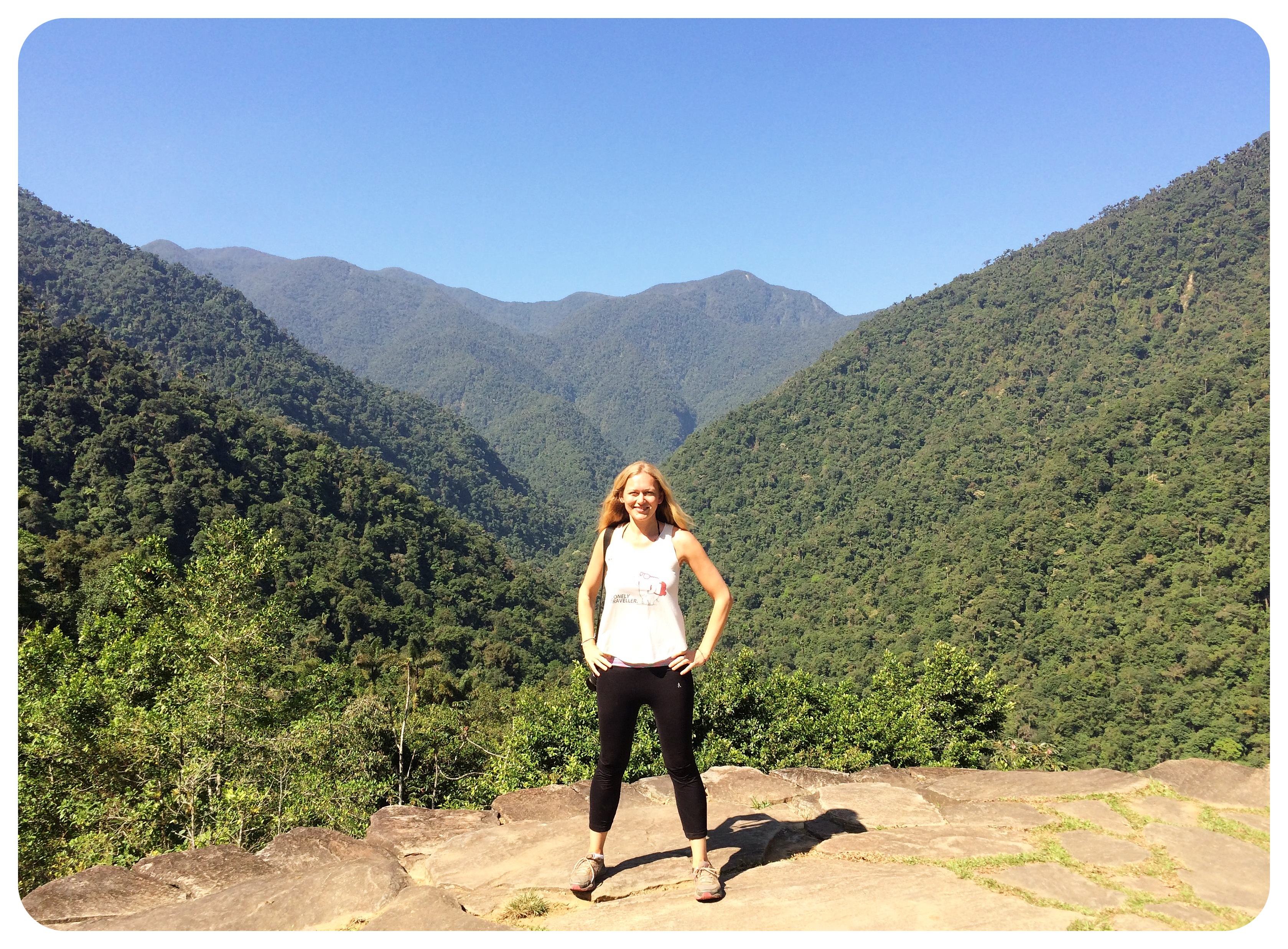 Was I crazy for traveling to Colombia as a solo female traveler, just as many family members and friends suggested I was when I told them I had purchased a plane ticket to Cartagena? Even though the country has gotten considerably safer in recent years, there is still a government warning for travelers to Colombia in place, which reads:
Was I crazy for traveling to Colombia as a solo female traveler, just as many family members and friends suggested I was when I told them I had purchased a plane ticket to Cartagena? Even though the country has gotten considerably safer in recent years, there is still a government warning for travelers to Colombia in place, which reads:
Tens of thousands of U.S. citizens safely visit Colombia each year for tourism, business, university studies, and volunteer work. Security in Colombia has improved significantly in recent years, including in tourist and business travel destinations such as Bogota, Cartagena, Barranquilla, Medellin, and Cali.
However, violence linked to narco-trafficking continues to affect some rural and urban areas. Despite significant decreases in overall crime in Colombia, continued vigilance is warranted due to an increase in recent months of violent crime, including crime resulting in the deaths of American citizens.
And it continues:
… there were several homicides of U.S. citizens in connection with robberies, including armed robbery on streets and in taxi cabs, public transport, home invasions, and muggings…
(You can read the full travel warning issued by the U.S. Department Of State here:
Is it safe to travel in Colombia?
The only reason why I did get on my flight the next morning was that friends who had been to Colombia calmed me down and encouraged me to go and not to cancel my trip. This reminded me why I had decided to go to Colombia in the first place: because everyone was raving about the country. Many of my friends who had traveled around South America declared it their favorite country on the continent, and everyone who had been to Colombia loved it. I hadn’t heard a single bad word from people I knew. Nobody I knew had warned me that it was NOT safe to travel to Colombia, even as a solo female traveler.
Before I get into details on how safe I felt in Colombia, I want to say this: Had I not boarded that plane, had I let those horrible experiences of other travelers discourage me from visiting Colombia, I would’ve missed what would become one of my favorite trips to date.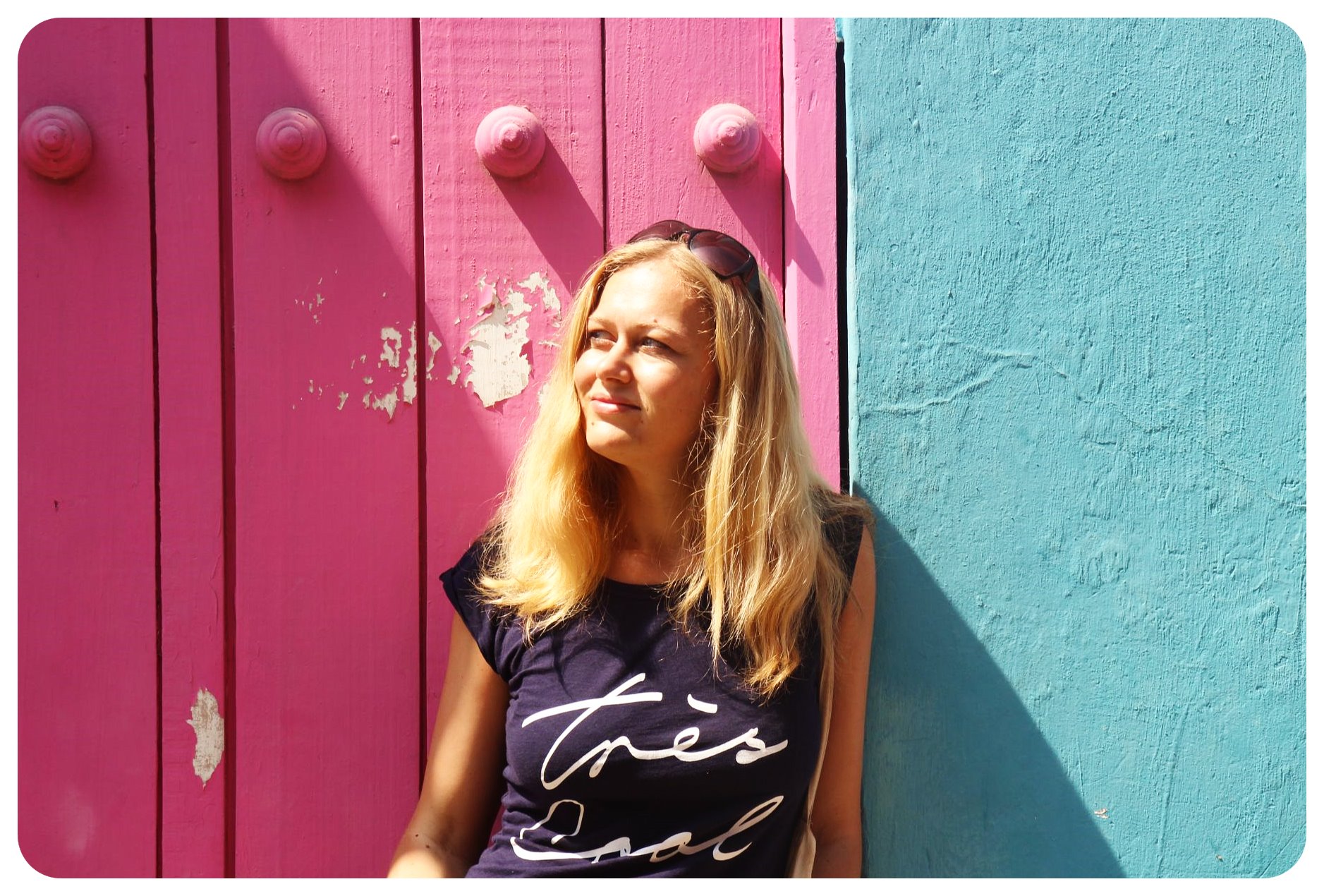
Everyone’s Travel Experience is Different
Travel experiences can vary drastically. The two female travelers whose experiences I had learned about just before I set off to explore Colombia, both had terrible, even traumatizing, experiences. And reading about those experiences definitely made me more careful throughout my own trip.
I expected to get robbed and lose all of my stuff, so much so that I opted for the more expensive World Nomads travel insurance, the Total Explorer instead of the Standard Policy (because it covers more). After reading what was necessary for a claim, I even took pictures of the serial numbers of all of my electronics (camera, laptop, kindle, iPhone) and emailed them to myself. I made sure that I had a digital copy of my passport, and left an external hard drive with a backup of my laptop at my friend’s house. I was ready to hand it all over to some rebels who for sure would rob me on a bus ride through the mountains in which they were hiding out.
Spoiler alert: That never happened. I traveled through Colombia for ten weeks, visited big cities like Bogotá and Medellin, the sketchy border triangle of Peru, Colombia and Brazil in the Amazon, and the coffee region, where my friend’s friend had been robbed a few months before I got there.
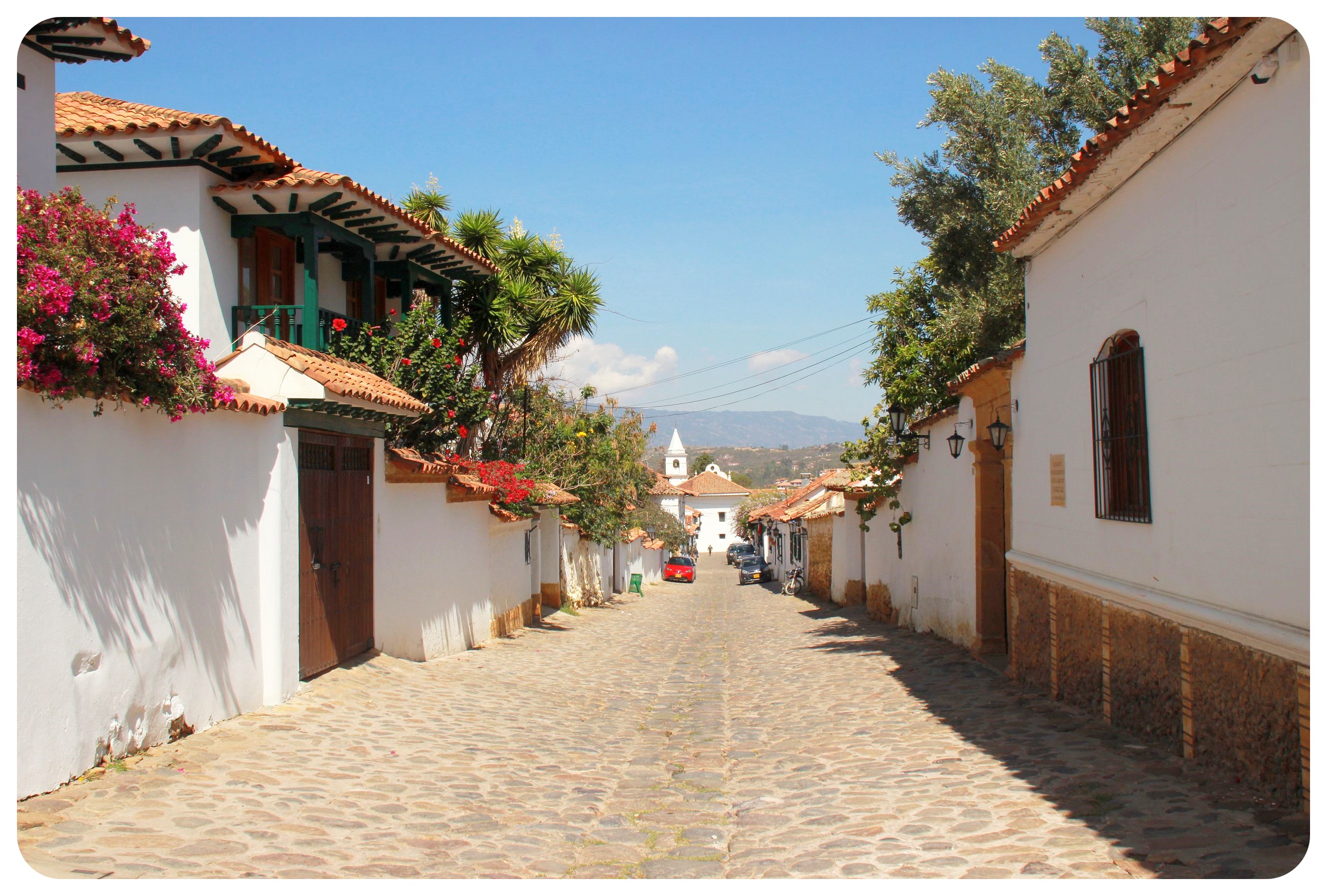
Ville de Leyva, hands down the place I felt the safest in all of Colombia.
Did I Feel Safe Traveling In Colombia?
Yes. I was a nervous wreck at first, but I relaxed quickly. It definitely helped that I had a companion for the first two weeks, and that every solo female traveler that crossed my path who I bombarded with questions about incidents assured me that they felt completely safe. No incidents whatsoever.
That helped ease my mind before I continued my trip on my own. After a 14-day trip almost without any incidents (I explain the ‘almost’ later on) through Cartagena, Santa Marta, Minca and Palomino with my friend, I set off on a four day trek through the jungle, which has become so popular in recent years that not just one group of hikers heads out into the Sierra Nevada Mountains to discover the ‘Lost City’, but groups from four or five different trekking companies, accounting for 50 to 60 people on the trail every day! Sure, that’s still far from the numbers of the well-worn Inca Trail but the ever expanding campsites showed just how much tourism has grown in recent years. Not once did I feel unsafe while hiking through the jungle in Colombia.
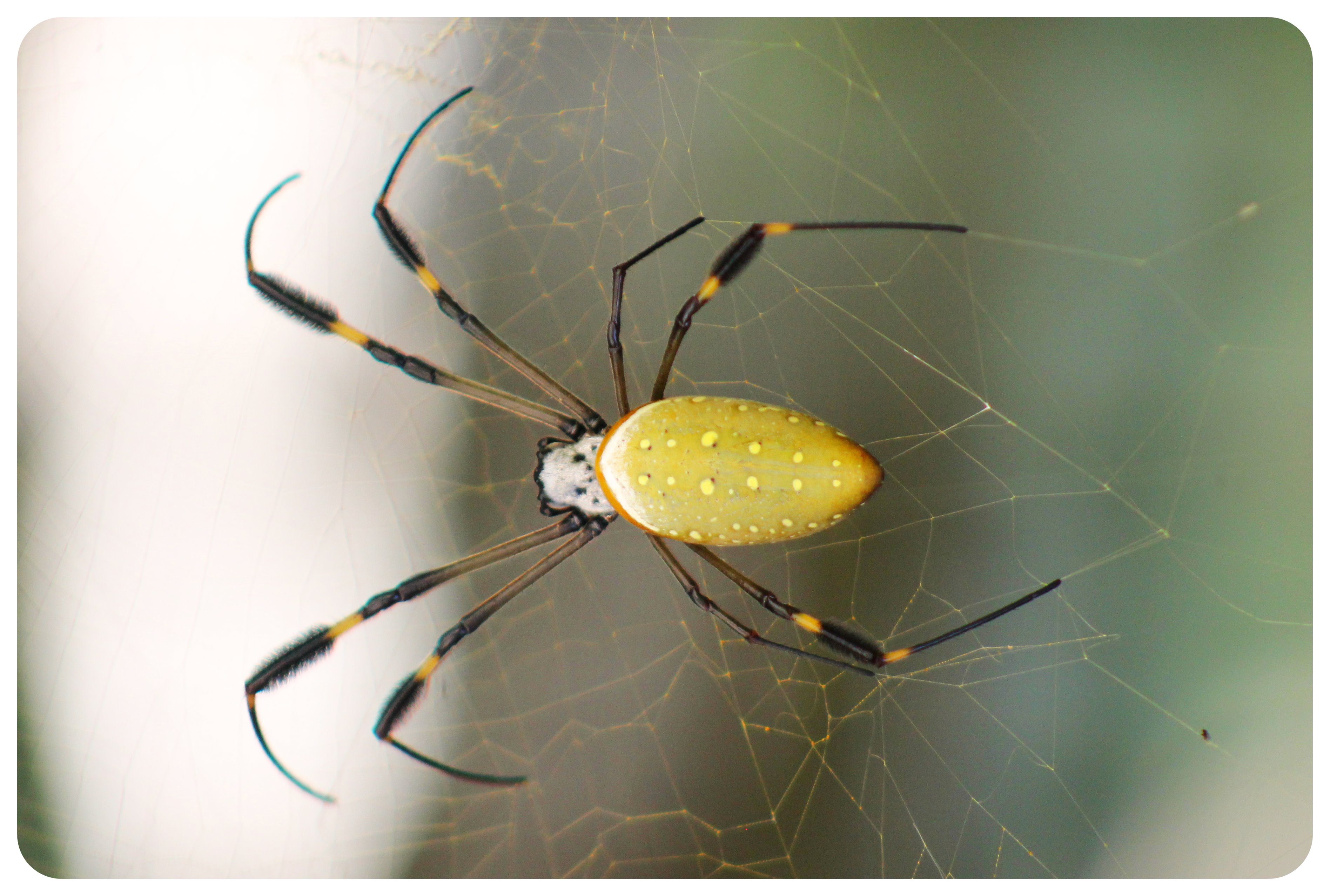
The things I was most scared of most in Colombia: Being attacked by one of these.
Kidnappings in Colombia?
To show you how much safer Colombia has become: on that very trek, eight hikers were kidnapped by ELN rebels (Ejército de Liberación Nacional), a left-wing guerilla group, in 2005. Our guide’s tales of the FARC (Revolutionary Armed Forces of Colombia, another left-wing guerilla group) coming to his family’s property and claiming it, forcing them to support them or they’d be shot, seemed like they came from another century, but these tales represented their harsh reality and had happened only a few years ago. And now I was walking through the jungle there, sometimes all by myself for long stretches, but I never feared some rebels would jump out of the bushes to kidnap me.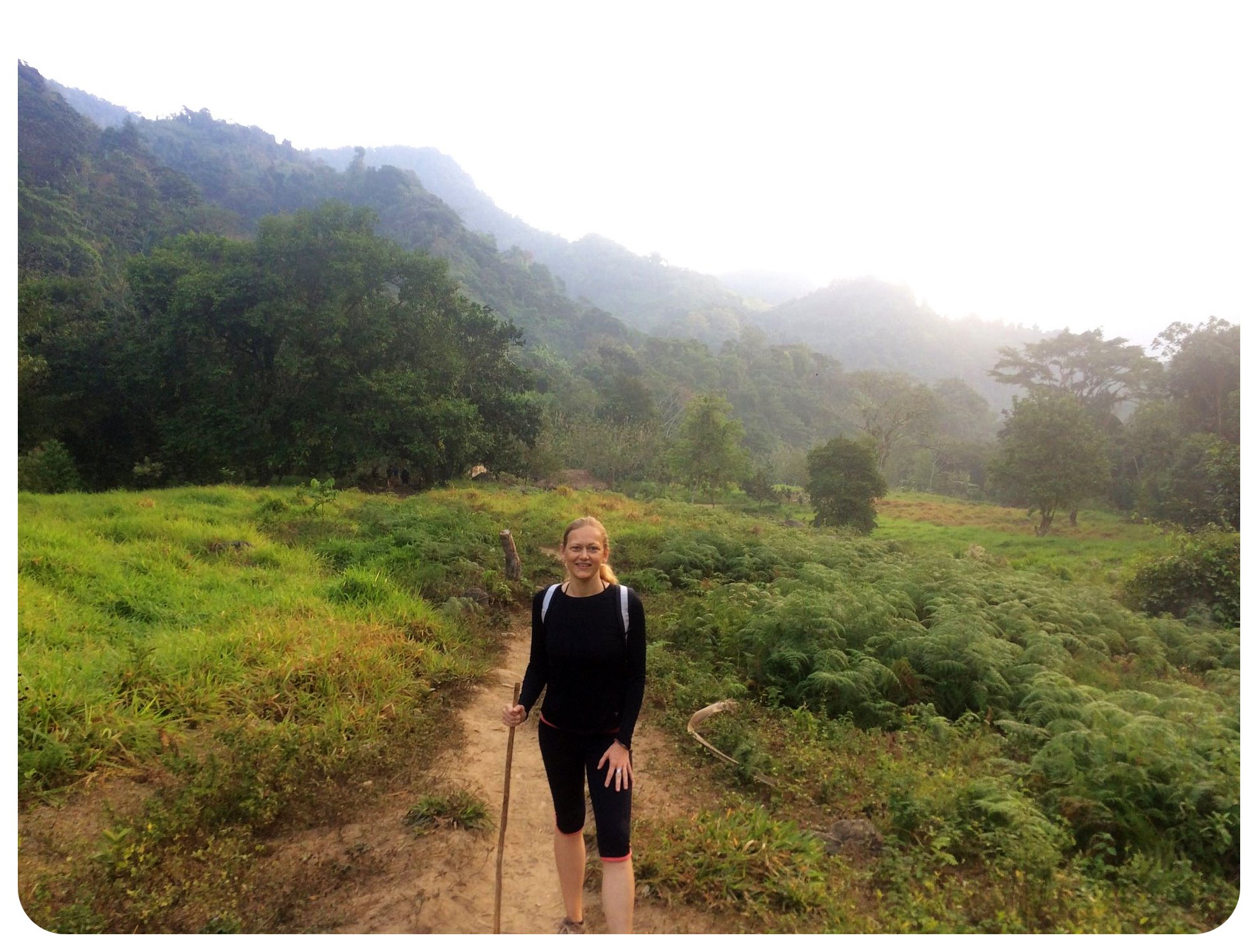 As far as kidnappings go, they don’t seem to occur in touristy areas, if at all, now that the FARC and the Colombian government came to a peace agreement. Kidnappings have decreased drastically over the course of fifteen years in Colombia: while in 2000, over 3,500 people were kidnapped, the number had dropped to 213 in 2015 and continues to decline.
As far as kidnappings go, they don’t seem to occur in touristy areas, if at all, now that the FARC and the Colombian government came to a peace agreement. Kidnappings have decreased drastically over the course of fifteen years in Colombia: while in 2000, over 3,500 people were kidnapped, the number had dropped to 213 in 2015 and continues to decline.
And let’s take a closer look at the recent kidnappings of foreigners that made international news: a Norwegian guy was kidnapped by guerillas in 2013 when he was crossing the Darian Gap on foot (which is insane!), and an American was kidnapped by the FARC in the same year while trekking in the rain forest near the Ecuadorian border – against the advice of Colombian police and others, so go figure. As long as you are staying on the tourist trail, you probably won’t find yourself face-to-face with the few guerilla groups that are still operating.
Traveling on Public Buses in Colombia
You may encounter guerilla groups while on a public bus, however, or at least armed robbers, like Anne and Jaimee who were just six days into their trip when their bus was hijacked by six gun-wielding passengers who took everything from them, consequently not only ruining their trip but also leaving them deeply traumatized. I had emailed Anne prior to my trip and took her advice to avoid public buses and take planes whenever possible instead (luckily domestic flights are very cheap!).
Anne also sent me the link to her guesthouse in Salento which has some information on bus robberies in that area on their website, stating that ‘in the past couple of months the last bus from Armenia to Salento has been held up twice by armed robbers.’ Even though the information is older, it is obviously still relevant and worth a read for the safety precautions they mention.
I ended up taking the bus from Pereira, where I had flown into, to nearby Salento, one of Colombia’s most charming and most touristy little towns. I decided, however, to stay in Pereira for a night instead of taking the bus in the evening since my flight got in after dark. I am usually okay with long bus rides, but after hearing about Anne’s experience I flew from Santa Marta to Bogota instead of taking the bus, and the few buses I took were only during the day, and I wore a T-shirt with a secret pocket (see below in safety tips).
I survived all bus rides I took just fine and was more scared to be killed by the crazy driving of the drivers (which seems to be a problem in all of South America) than by hijackers. But again – this is situational, and Anne and Jaimee who were in the same spot a few months earlier were not as lucky as I was.
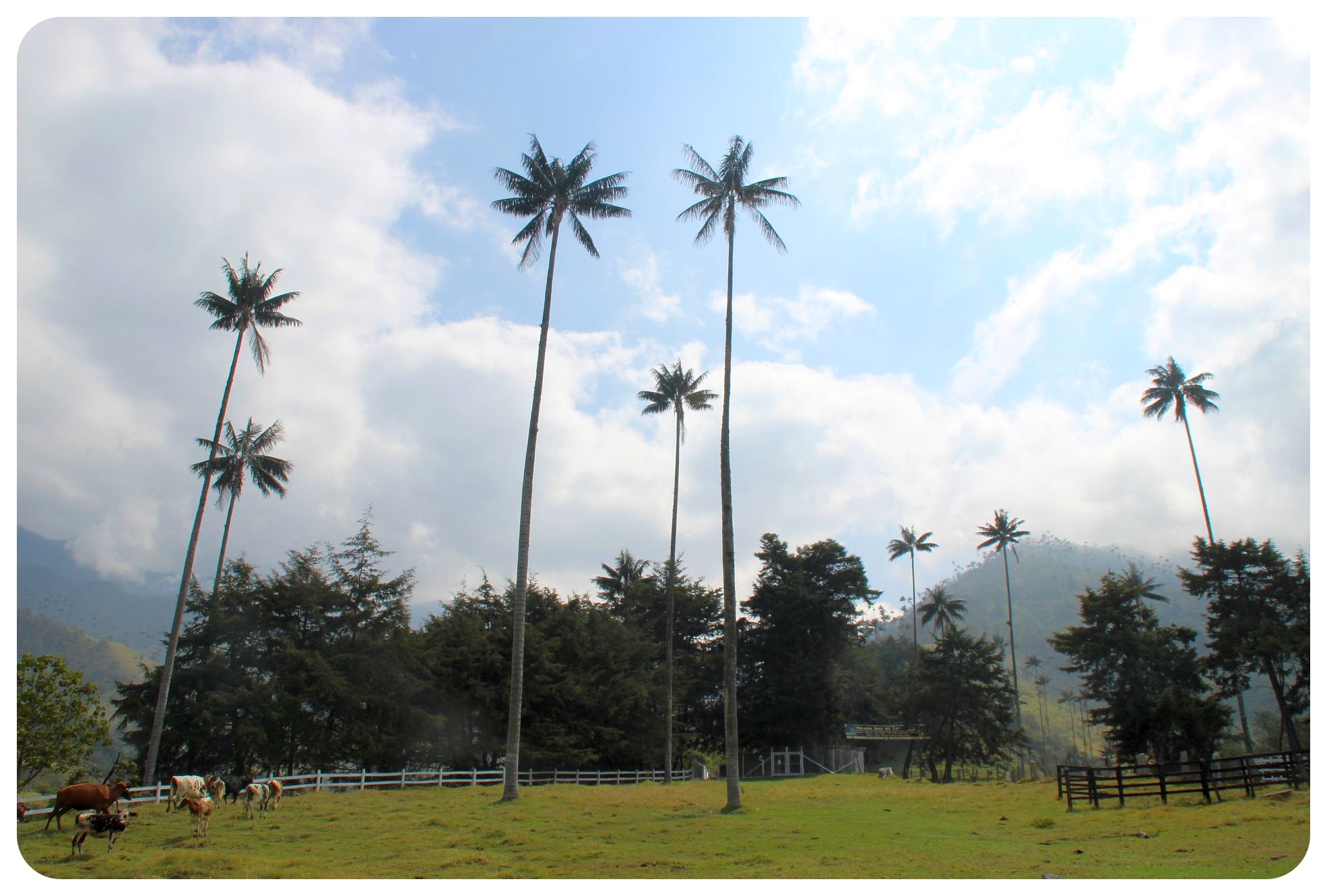
The Valle De Cocora near Salento – I am glad I went because it is so beautiful
I would recommend avoiding night buses and opt for flights whenever possible.
As for inner-city buses: I took them several times and I never encountered any issues, but I read that pickpocketing on buses in Bogota is not uncommon, so be vigilant if you take the bus and always keep your backpack with you, ideally on your lap, never in the overhead compartment or under the seat.
Is Bogota Safe?
Bogota was the city where I was the most worried about my safety because the city doesn’t have a great reputation. I really wanted to stay in La Candelaria, the historic center, but had heard that this was the most dangerous part of the city, with muggings and robberies even in broad daylight. The Lonely Planet painted such a black picture of the city that I even contemplated skipping Bogota entirely. You can read their take on Dangers in Bogota here.
Eventually, I decided not to skip Bogota but to stay in the Chapinero neighborhood for the first couple of days, right in the heart of Bogota’s financial center, where you find more upscale hotels and where global corporations have their offices – in short: a safer area of town. To check out La Candelaria, I hopped in a cab (more on cabs in a minute) and went there during the day to see how safe I felt about it and if I wanted to move into a hostel over there.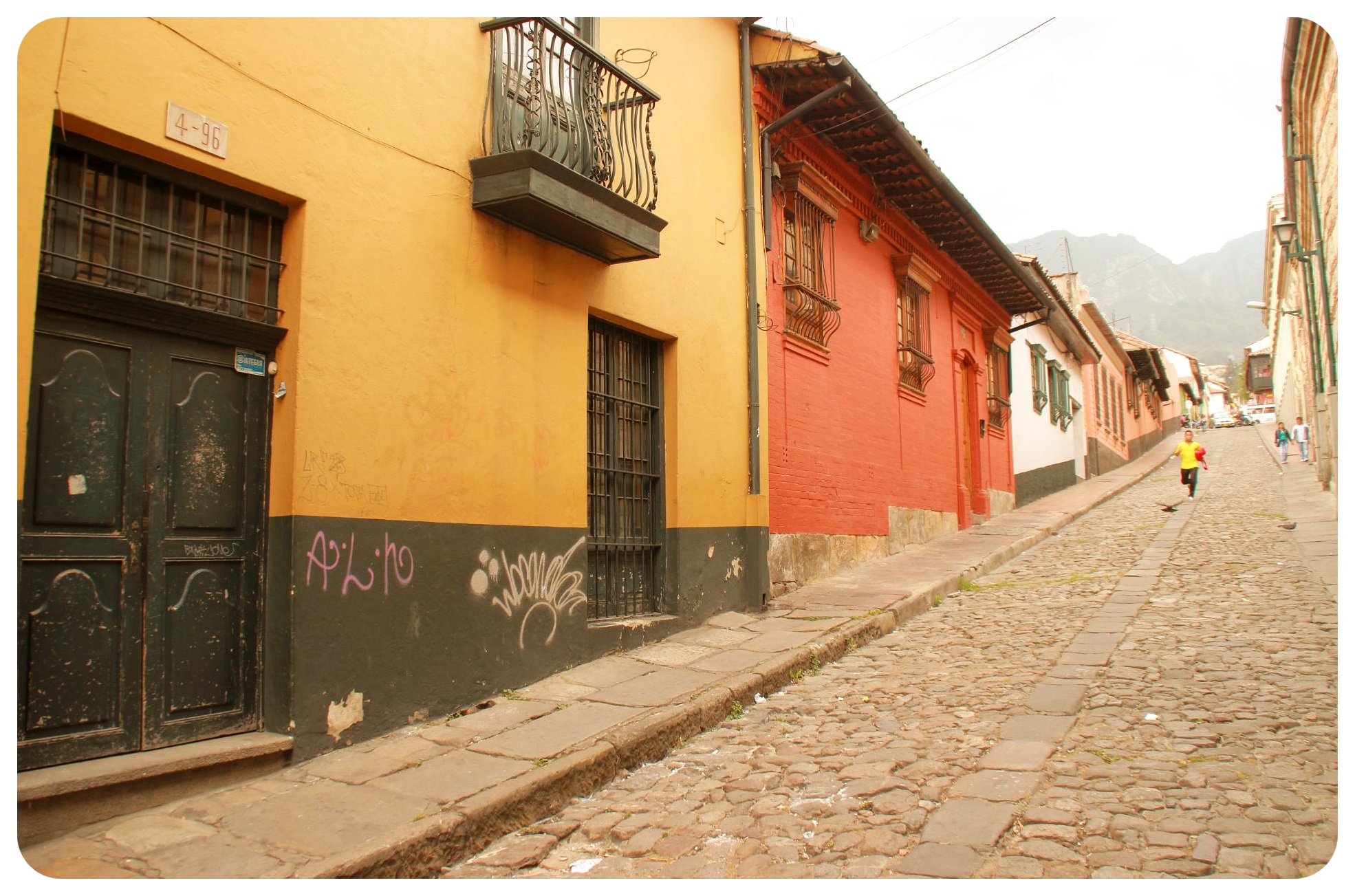 When I arrived in La Candelaria, I was a bit nervous, and probably a bit paranoid, and the presence of heavily armed police officers throughout the neighborhood didn’t help in calming me down. However, I loved the neighborhood with its colorful street art and Spanish colonial houses and moved over there a few days later. I thought to myself that the police presence was probably a good thing to keep the bad guys out of sight (ironically, the police men all disappeared as soon as it got dark though).
When I arrived in La Candelaria, I was a bit nervous, and probably a bit paranoid, and the presence of heavily armed police officers throughout the neighborhood didn’t help in calming me down. However, I loved the neighborhood with its colorful street art and Spanish colonial houses and moved over there a few days later. I thought to myself that the police presence was probably a good thing to keep the bad guys out of sight (ironically, the police men all disappeared as soon as it got dark though).
While my paranoia/fear never completely faded, I felt safe enough to carry my laptop with me during the day, my dSLR camera, and my phone. However, at no time did I flash any of these items, and when I took photos I made sure to put my camera or phone back in my bag immediately after I took the shot. I ended up staying much longer in Bogota than expected and was glad that I didn’t let the Lonely Planet or other travelers’ experience scare me off visiting Colombia’s capital.
Two of the articles that made me super cautious about La Candelaria was this one by Britany:
Robbed in Bogota, and this one: Getting Mugged At Knifepoint In Bogota.
In it, Megan writes:
One of the main problems with traveling in a place like Colombia is the mixed information that you’ll get. Some people say it’s perfectly safe and that they’ve never had any problems. Other people have endless horror stories. The thing they often have in common? They were doing the same things in the same places and conducting themselves in the same way.
And I couldn’t agree more with this – I had heard so many horror stories about Bogota and especially La Candelaria, and yet, I was completely fine. I was walking around the deserted streets of La Candelaria at 2am all by myself, and during the day, I walked with my laptop in my bag to work in coffee shops, and not just once, but almost every day (I spent well over a week in Bogota).
I hiked in the Valle De Cocora without any incidents but other people were robbed on that very same hike. I felt extremely safe in Medellin, especially in the upscale Poblado neighborhood, but only a few months before I visited, an American tourist was killed there when he refused to give up his valuables in a robbery.
Like I said, it is all situational. The main thing to know about Colombia is: there is a chance that something could happen to you. And that’s the difference to a country like Japan, for example, where safety isn’t something travelers have to be concerned about.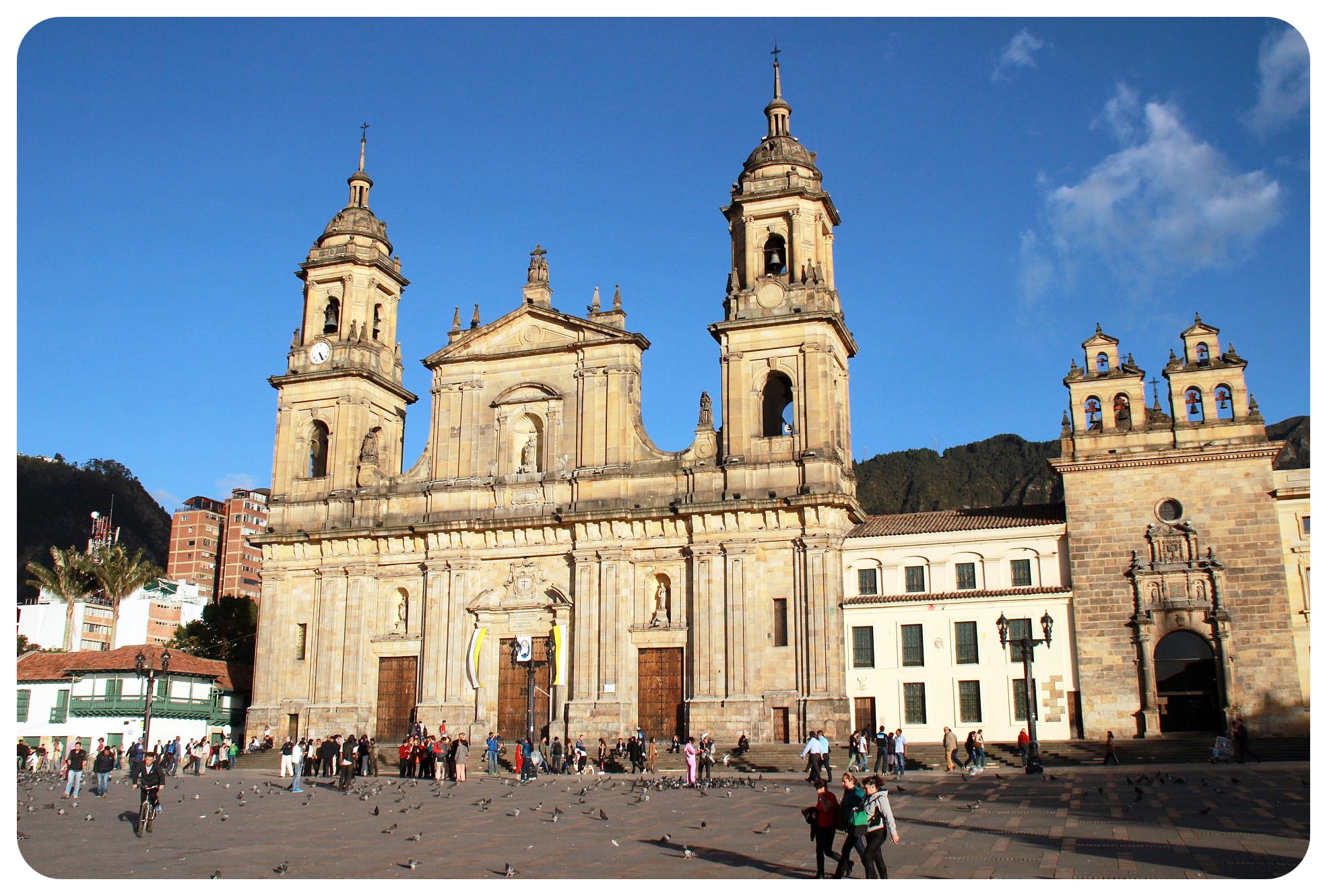
Being Drugged in Colombia
Another reason why I was so afraid of spending time in Bogota was because somebody had told me about a drug named Scopolamine (also known as Devil’s Breath and Burundanga) which is a powder that is usually blown off a piece of paper into a victim’s face, with criminals would walk up to tourists with a map in their hand pretending to wanting to ask for help. But instead, they are drugging you.
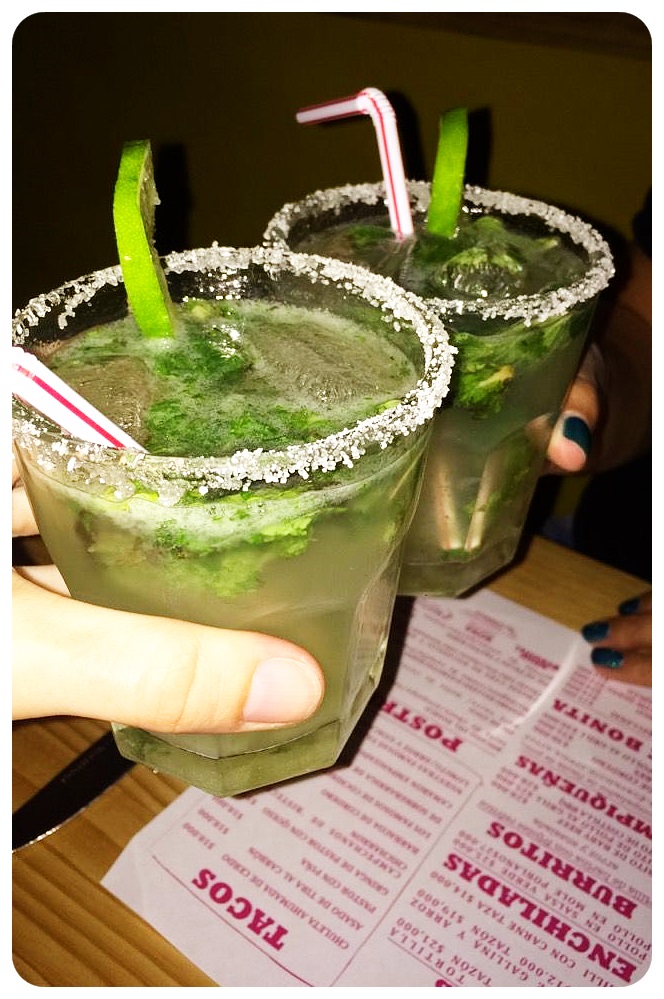
Always keep an eye on your drink!
Scopolamine makes victims completely lose control over their own thinking – they can be talked into walking to an ATM and withdraw money, or hand over their credit cards complete with PIN numbers, and so on. And the worst part: victims usually don’t even remember anything of what happened to them! Another way to get drugged with Scopolamine is by putting it in your drink, so not only was I on the lookout for people with a piece of paper in their hands, but I always made sure I didn’t leave my drink out of sight when I went out at night.
I wanted to mention this here because I had never even heard of this drug but reading up on it prior to my trip made me be more aware of my surroundings and apparently cases of Scopolamine druggings went up by 133% in Medellin in 2015 – so this is definitely something to be aware of. Especially female travelers , because other than theft, rape is the most common thing the drug is used for.
The U.S. Embassy in Colombia published a security alert in 2023 about an increase in crimes involving sedatives.
WorldNomads has a good article on how to avoid getting drugged in Colombia: How to avoid getting drugged in Colombia – Stay safe!
Are Taxis Safe in Colombia?
My very last stop in Colombia was Medellin, where I was staying with some friends. When they found out that I didn’t use UBER, but normal taxis, they freaked out. “This isn’t safe!!”, I was told, and then I was schooled on taxi kidnappings and robberies in which cab drivers bring you to a deserted area of town to rid you of all your belongings. Hearing that freaked me out, but then, looking back at ten weeks of me waving down cabs, I realized that not once did I feel unsafe in a taxi. I guess it helped that I speak Spanish and was always able to converse with the driver. In Bogota, when I took a cab from the airport to the hotel, the driver even ran after me to bring my iPhone to the reception, which had fallen out of my pocket in the cab.
Were There Sketchy Moments During my Travels in Colombia?
I’m not going to sugarcoat my experience in Colombia – while nothing bad happened to me and I felt safe there, even when I was by myself, there were three sketchy moments I should mention.
-
Burglary in Palomino
For one, my beach bungalow in Palomino was burgled. I am still so grateful that I didn’t lose anything, because that happened only a few days into my trip and could have easily ended it right then and there.
It happened during the day, and the burglar(s) must have jumped on the chance of an unlocked window (even though my friend and I were sure that we had closed them), climbed in through the window and started to look through all of our belongings. When we returned from the beach later that day, we came back to find our room looking like something had exploded in there: all of our stuff was strewn across the floor.
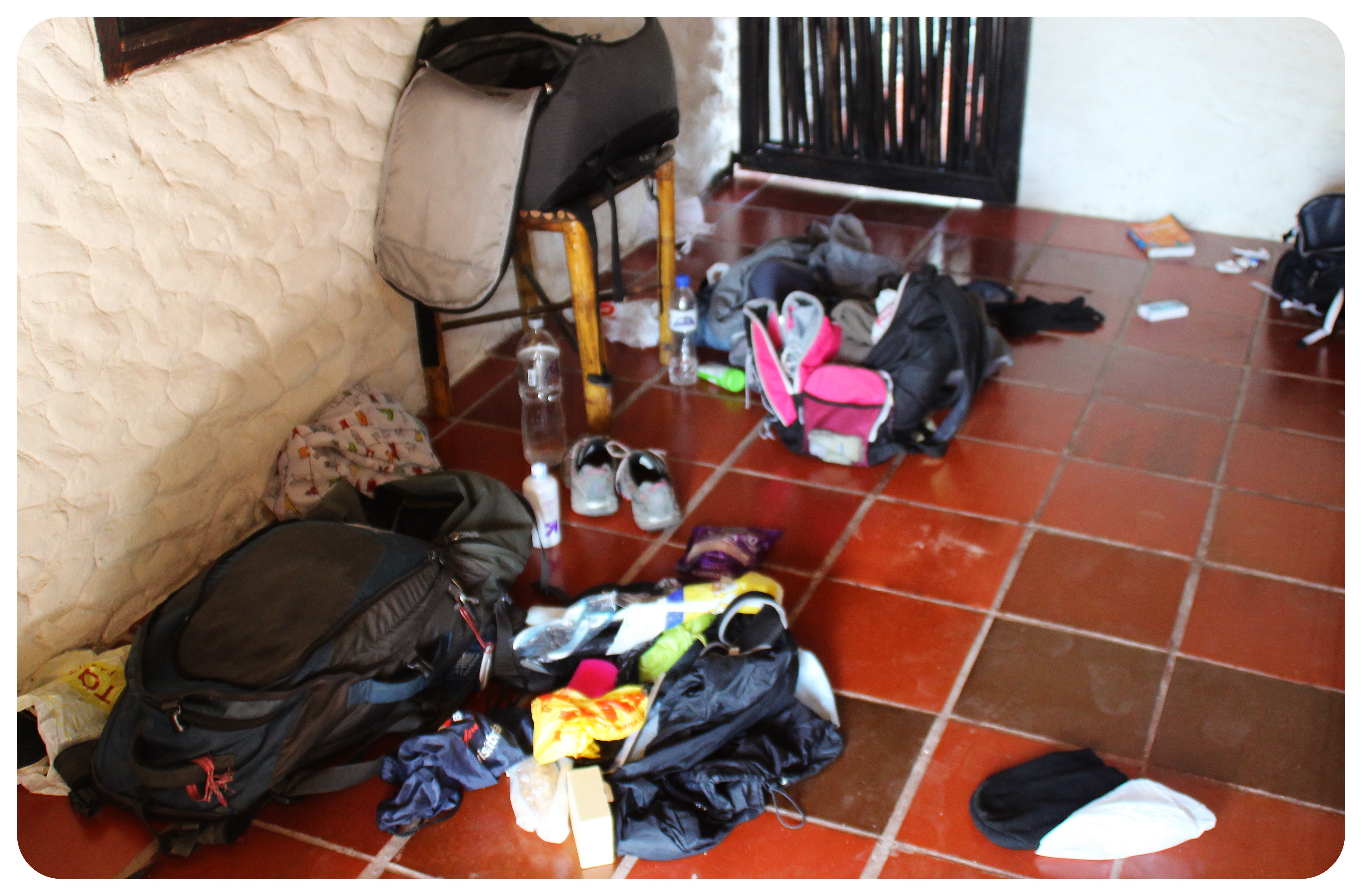
The break-in aftermath
Someone had emptied out little cosmetic bags and rummaged through all of our luggage. Everything except for the main compartment of my backpack, which I had locked up with a little padlock (mind you, the key for the lock was hidden in the room!). A real thief would’ve just sliced the bag open, or even taken it, which is why I think it was someone who simply saw an opportunity and got interrupted at some point, and so he/they left without our passports, cash, credit cards, laptops and other valuables. I know: I am incredibly lucky!
Even though that happened at the beginning of the trip, it didn’t change my mind about how safe I generally felt. Beach bungalow break-ins happen everywhere in the world, not only in Colombia. And we were assured that the sleepy beach village of Palomino was one of the safest places in the country, which I fully believed.
-
Heeding a Warning in Medellin
The only time I felt a little tense about my surroundings was in Medellin. I had explored the city on my own and was ready to head back to my friends’ house. I typed the address into Google maps on my phone and followed the directions. Halfway, I was stopped by a guy on a pedestrian bridge who was walking in the direction I just came from. “What are you doing here?”, he asked me in Spanish. I replied that I was on my way home to where I was staying. “You really shouldn’t be here”, he said. “Why?”, I asked, since the area seemed perfectly fine to me. “It’s not safe”, he answered, and I immediately turned around with him, taking a longer way home. Even though that path seemed fine to me, I wasn’t going to risk it after being warned by a local.
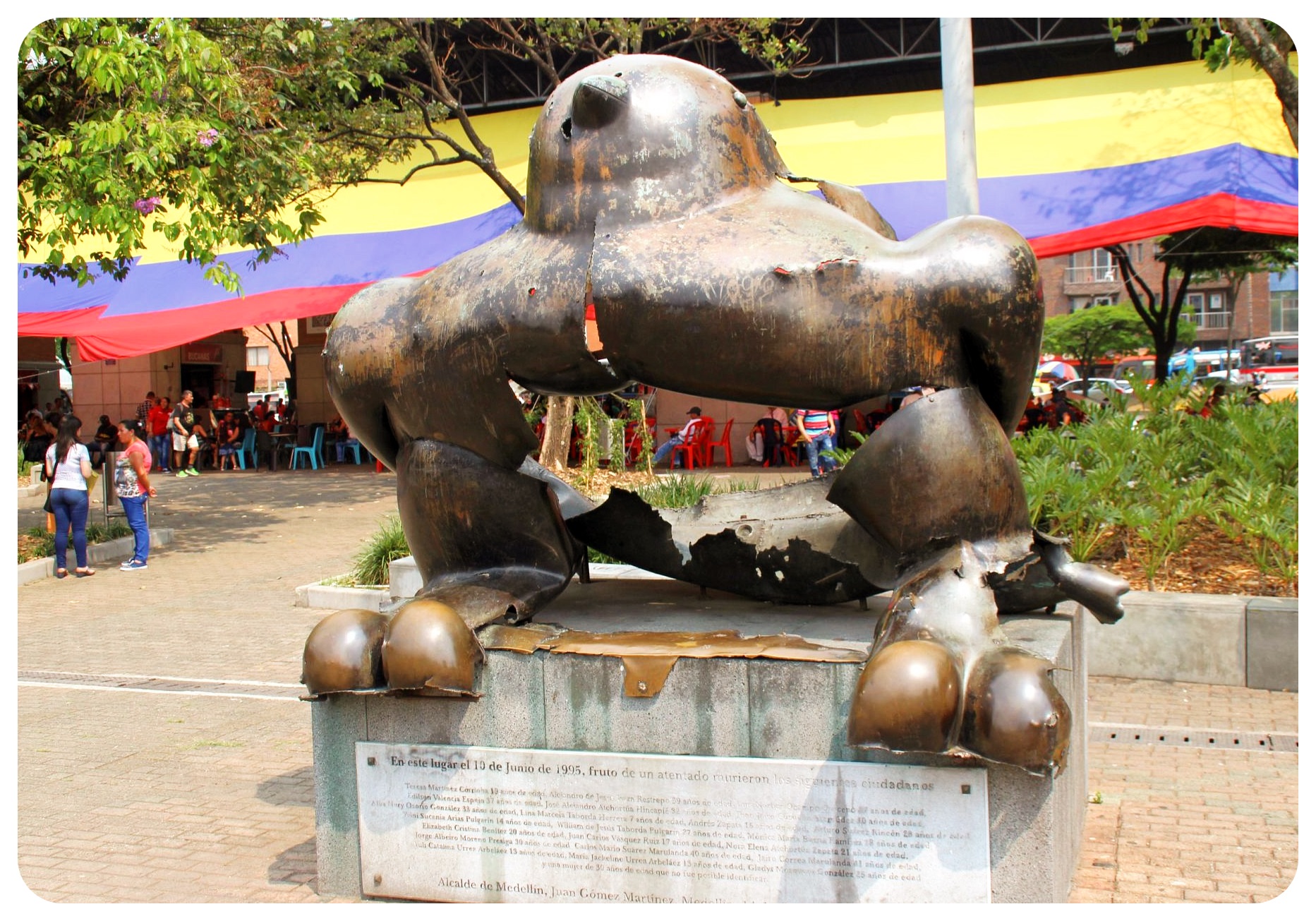
20 years ago, Medellin was everything but safe. 30 people were killed and more than 200 wounded when a bomb, placed in the base of this Botero sculpture, exploded. One of only many attacks during the time when Medellin was controlled by the Cali drug cartel.
And that’s my main advice: Listen to locals and follow your instinct. My instinct in that moment was to go back. In other towns I visited, like Pereira, a city I barely knew anything about, I asked the hostel staff if it was fine to walk around by myself at night, as a solo female traveler in Colombia, and whenever someone told me to take a cab, that’s what I did.
-
Guerrillas in Leticia
Leticia is a small town in the Amazon, right on the border to Peru and Brazil. I wouldn’t have thought of it as unsafe, but then I happened to come across this short paragraph on safety in my Lonely Planet:
‘A longstanding military presence in the region tries to keep Leticia/Tabatinga and the surrounding region safe, but there are issues. Former narcotraffickers, guerrillas, paramilitaries and raspachines (coca-plant harvesters) who have been re-inserted into mainstream society and now live on the outskirts of Leticia and Puerto Nariño run poker houses, dubious bars and the like around the city. Don’t wander outside these urban areas on your own at night, especially on Leticia’s infamous ‘Los Kilometros’ road.’
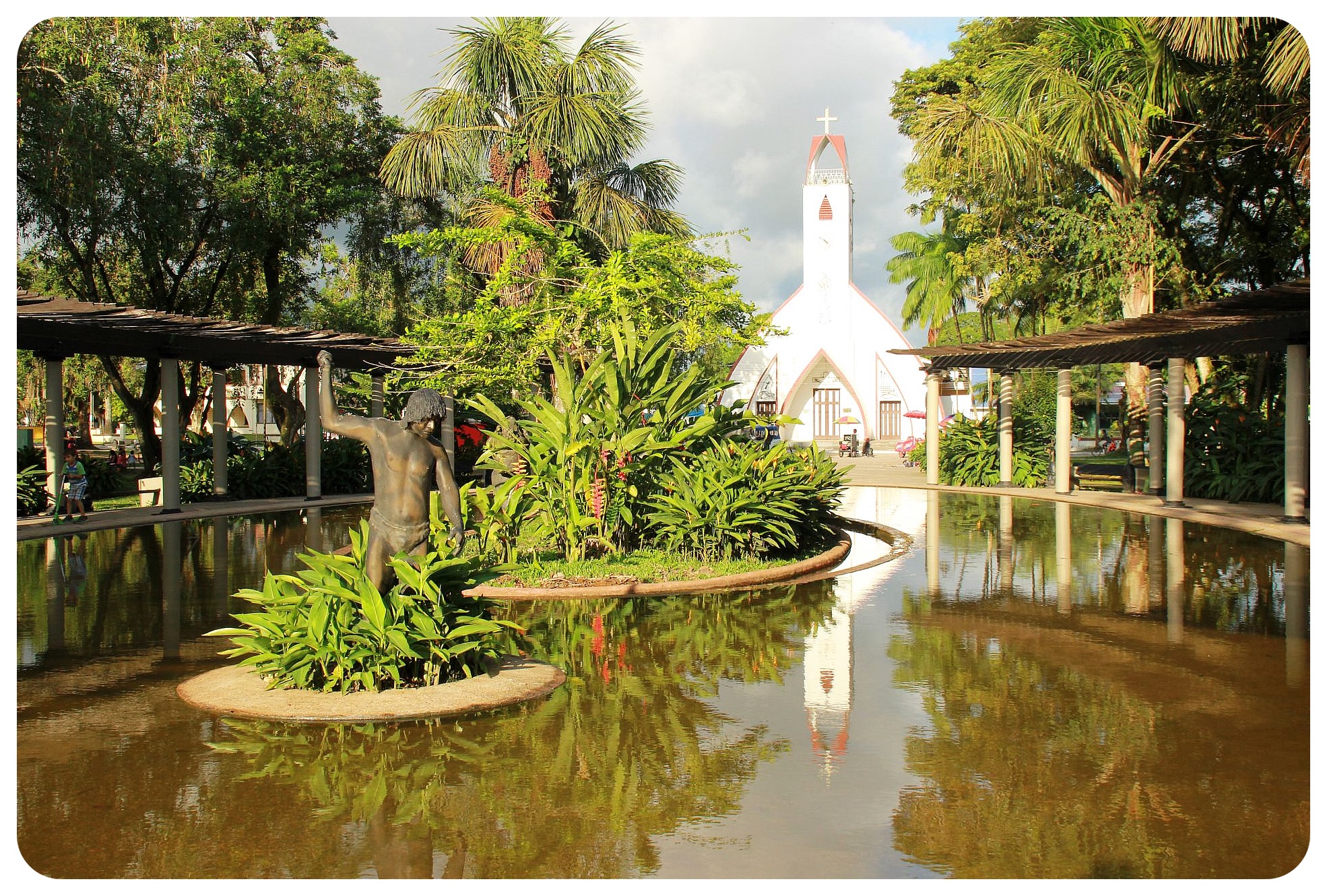
Quaint little Leticia
It shouldn’t come as a surprise that a border town in a region known for its drug production and trafficking is sketchy, but I never felt unsafe walking around there – until one day when my travel companion and I were on our way back to the hostel from dinner.
A motorbike with two guys passed us, the one in the back carrying a large rifle or some kind of machine gun. They looked at us, then turned around and drove back towards us. My heart dropped. I felt how my friend also stiffened up and pulled me behind a little wall. I was so scared that I started shaking, and all I could hear was my heart beating in my chest. I was sure we were going to get shot. However, they did not come back for us. I am mentioning it because this was by far the scariest moment I had in all of my time in Colombia (and the only time that I saw someone I’d identify as a guerilla).
Conclusion: Is it safe to travel in Colombia?
As you can see, even though nothing happened to me personally and I didn’t necessarily feel unsafe, I never felt as carefree in Colombia as I did in Chile for example, where I never worried about being robbed or drugged. But in Colombia, where I had heard just too many negative stories, I never let my guard down. It can get quite exhausting to always be ‘on alert’, but being with another person helped me a lot to relax, which is why I tried to travel with someone as often as possible.
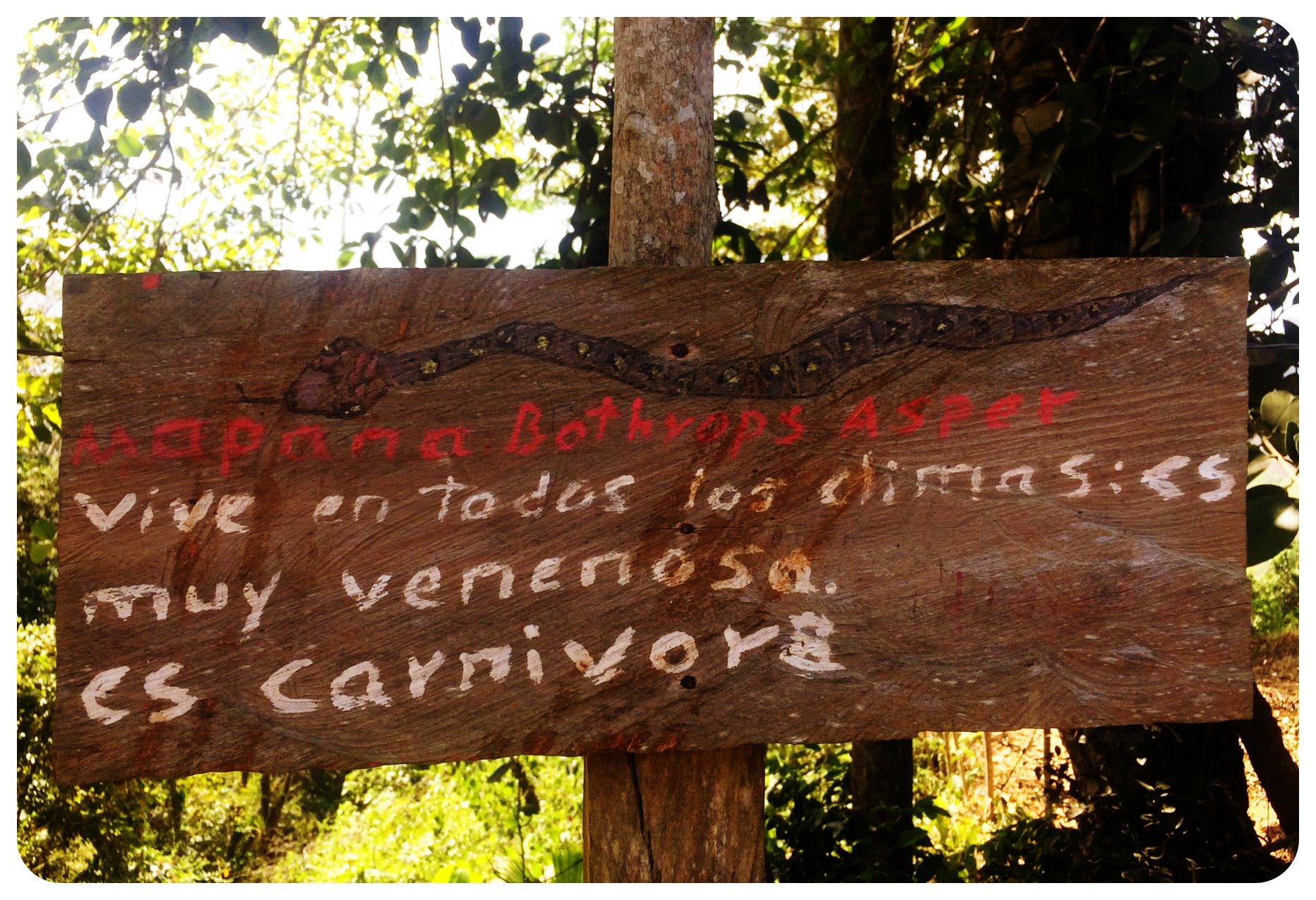
Other serious dangers in Colombia: Very poisonous snakes, who are carnivores.
I had such an amazing time in Colombia that I wouldn’t think twice about recommending it as a travel destination to other independent travelers, including female solo travelers (I know that others will disagree here). Just don’t be stupid. Take precautions and be aware of possible threats to your safety, and inform yourself before you visit Colombia, for example with this article and the following tips for staying safe in Colombia:
My Tips for Staying Safe in Colombia
Dar Papaya: Do (not) give papaya
This is a very common saying in Colombia, and while it sounds strange when you translate it literally: give papaya, it means making yourself an easy target, setting yourself up to have something taken from you. Basically: if you flash jewelry or a fancy phone, it is your own fault when somebody tries to take it from you. Don’t ever flash your money or valuables.
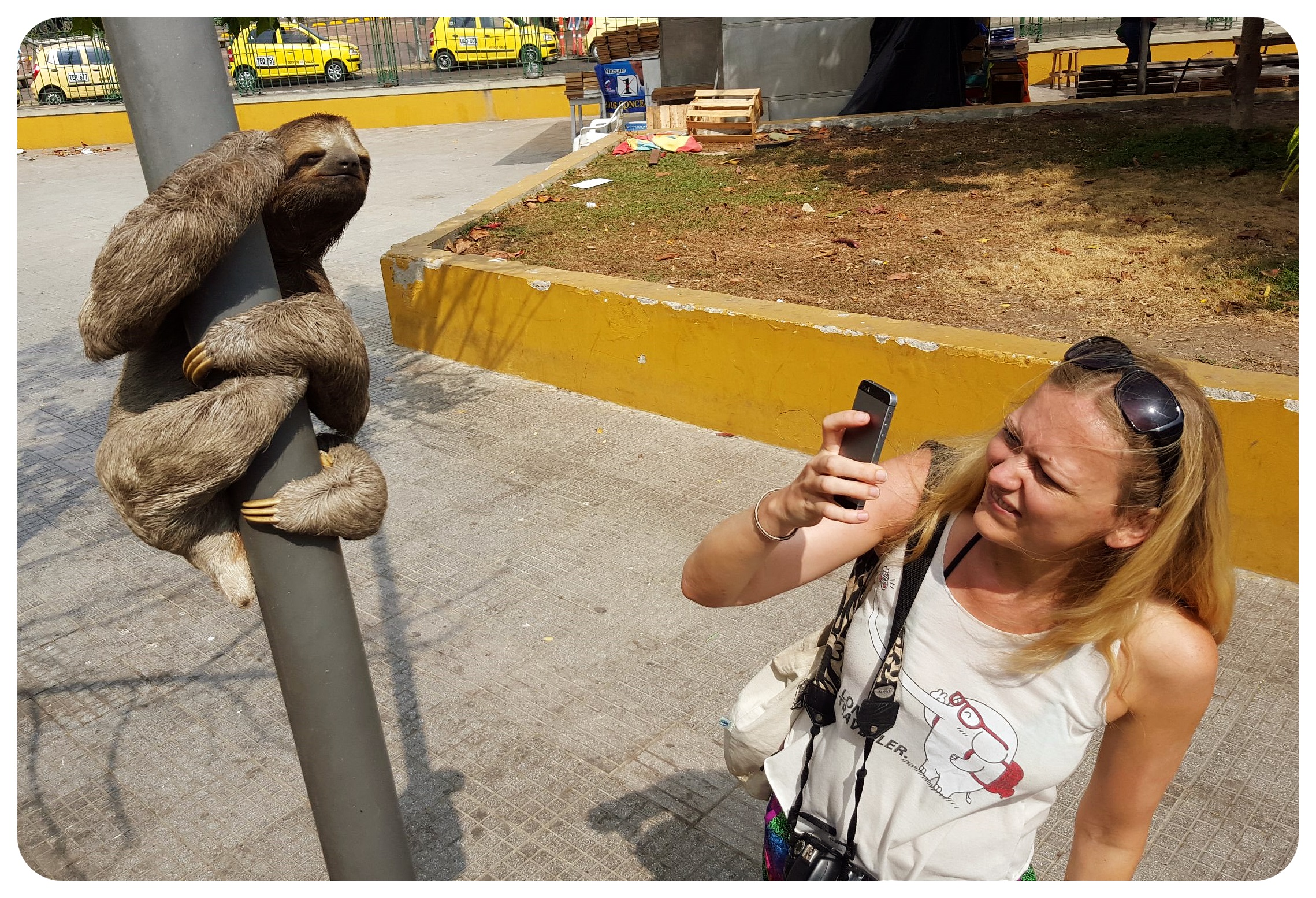
This is exactly what you SHOULDN’T do: flash both your iPhone and your expensive camera. But hey.. THERE WAS A SLOTH!!
Don’t carry any valuables with you
On that note, try to have as few valuable items on you as possible. I would only ever take my credit card with me when I was planning on taking out cash, and I had only as much cash on me as I was planning to spend. I rarely had more than $20 on me – unless I was traveling to a new city and had everything I owned on me. For which:
Be pickpocket-proof in Colombia
With that I don’t necessarily mean wearing pickpocket-proof underwear (even though I wore my Clever Travel Companion T-Shirt with an invisible, hidden pocket every time I was traveling from one city to another), but just keeping your wallet and phone in a safe place where it can’t be reached easily. If you keep it in the pocket of your jacket, make sure you zip it up, if you carry a wallet, make sure it can’t be taken out of your bag or pocket easily. I usually just carried a bit of cash in my jeans pocket which are almost impossible to get into, especially without me noticing.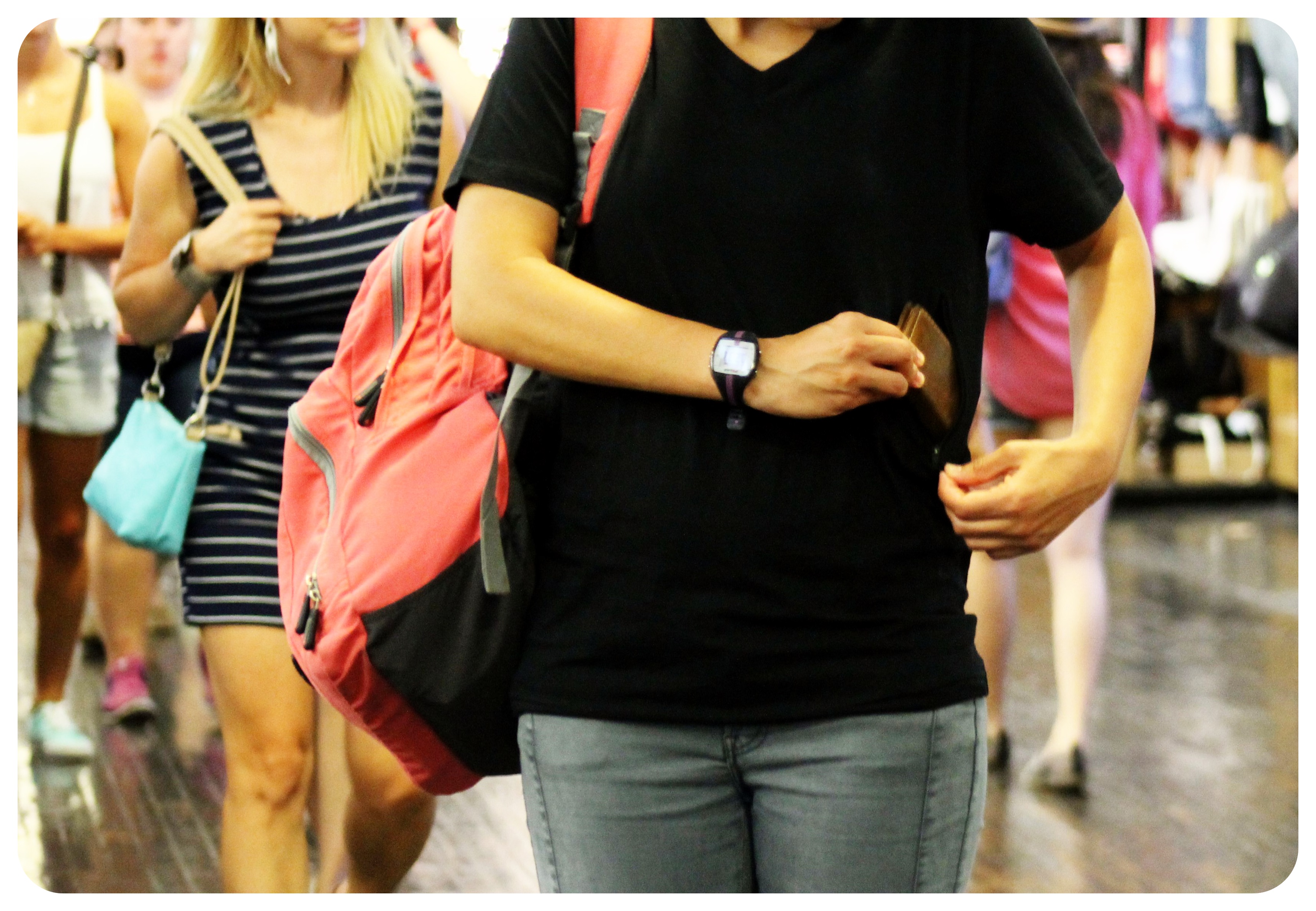
Be prepared for the worst case scenario
And should the worst case scenario happen to you, be prepared. Email yourself a digital copy of your passport before you leave on your trip, and most importantly: invest in travel insurance. I use World Nomads, and as I mentioned before, I took down all the serial numbers of my electronics to make sure I’d get reimbursed for them in the case of theft. Read the small print of the travel insurance you are buying to find out what you need to make a claim.
And most importantly: Make sure the travel insurance of your choice covers Colombia! Some travel insurances don’t cover countries for which a government travel warning is issued. Also know the numbers to call in case you have to report a stolen credit card and write down your credit card information somewhere.
Use only safe ATMs in Colombia
I only ever took out money at ATMs in proper banks, not at ATMs in the street. I tried to always have someone with me, and if I was by myself, I was monitoring my surroundings for sketchy people extra carefully.
Trust your instincts
If something feels off to you, get out of the situation. That goes for a dodgy taxi ride, questionable travel buddies, or anything else that sets the alarm bells off in your head.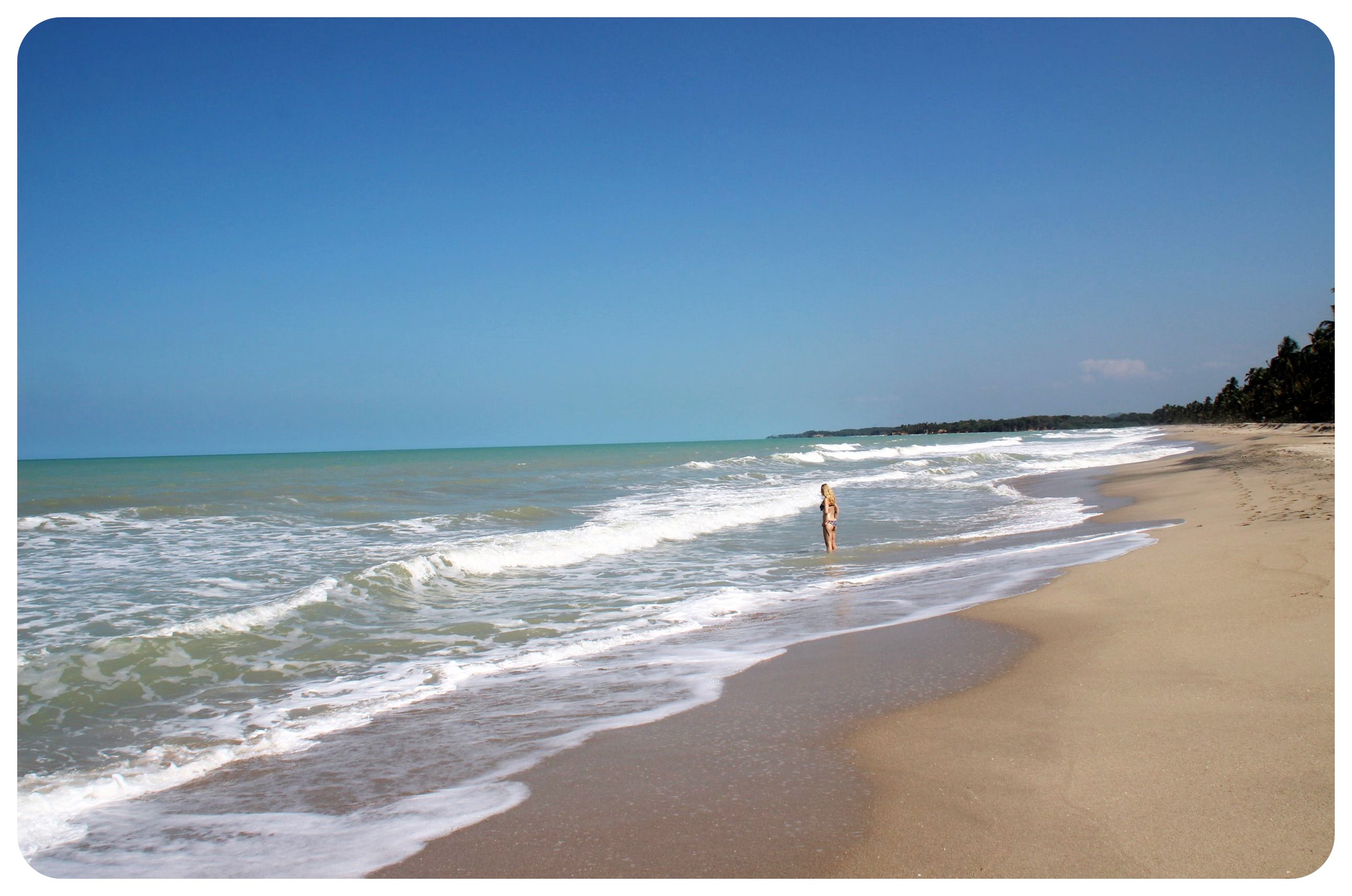
Use UBER or another taxi app
If you’re feeling uneasy about taking regular taxis, download UBER (iOS/Android) or one of the other two popular taxi apps EasyTaxi and Tappsi (download for iOS/download for Android). EasyTaxi (download for iOS/download for Android) is more prevalent than UBER in Colombia, but Medellin and Bogota both have UBER. It is affordable and worth the few extra dollars to have peace of mind, knowing your driver is registered with the app, so they will be less inclined to bring you to the outskirts of town and leave you there, driving off with your belongings.
If you want to be on the safe side when you’re first arriving in Colombia, consider booking private transportation from the airport to your hotel / hostel.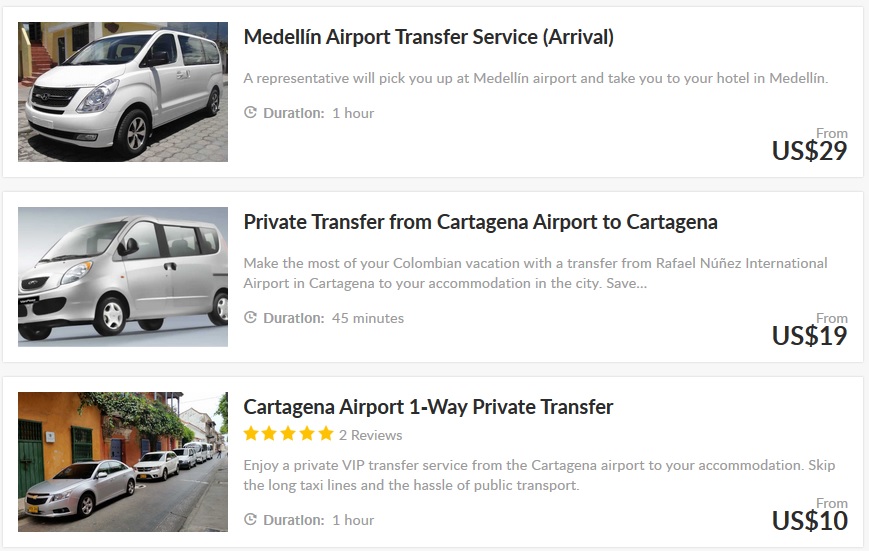
Team up with other travelers in Colombia
Team up with other travelers whenever possible. It is always easier to keep an eye on your belongings when there are two pairs of eyes instead of just one. It is also safer to go out at night in a group, making you a less easy target than if you were walking around all by yourself.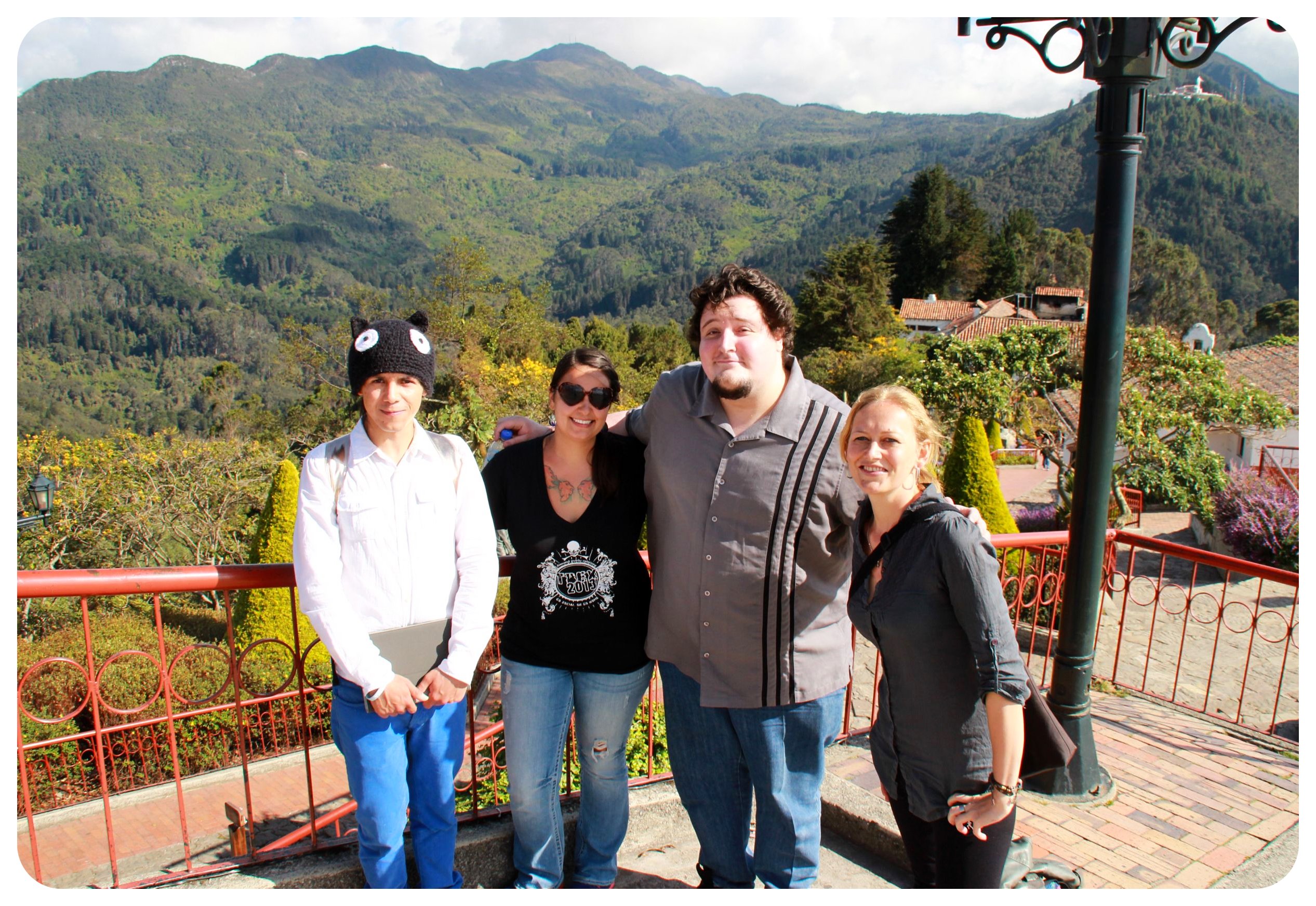
Inform yourself
I made it a habit to always read the safety section in the Lonely Planet before I arrived at a new destination to inform myself of the safety concerns in that area, and I always read the entire WikiTravel for a place I visit, not just because it has generally very useful and comprehensive information, but the ‘Stay Safe’ section is usually more up-to-date than the one in a travel guide.
I also googled ‘robbed in Bogota’ or ‘robbed in Salento’ for example, before I got there, because I knew it’d bring up Tripadvisor forum discussions or blog posts for these keywords, giving me the chance to find out if there had been any incidents lately.
Further reading:
…and finally:
My 13 favorite travel moments from Colombia
…to remember why it is worth it to travel to Colombia!
Have you been to Colombia? Did you feel safe or did you have any unpleasant experiences? Share in the comments below….
PIN IT!
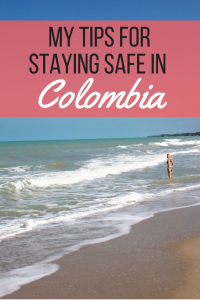

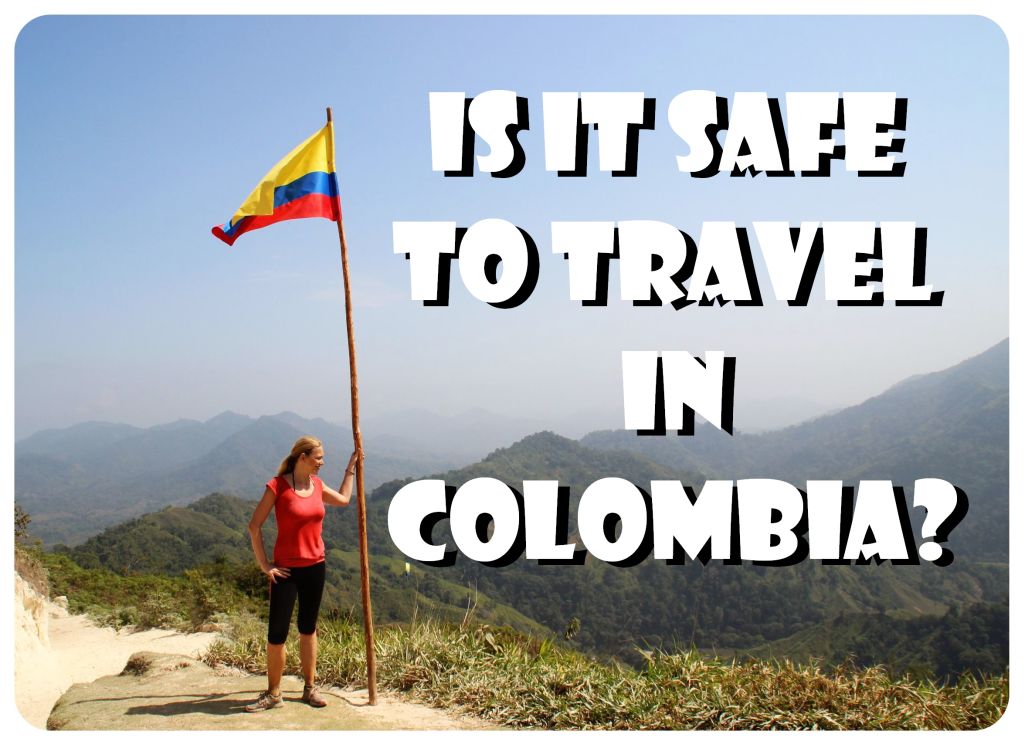




Tanya
Monday 8th of May 2023
Hello. Great advice here. How did you manage taking photos? I have an iphone and am planning on visiting Bogota and Cartagena this summer. Thanks.
Dani
Tuesday 9th of May 2023
Hi Tanya, I used my iPhone a lot but also had my dSLR camera on me. I felt safe taking out my big camera in most places (Cartagena for sure!); the only place where I stuck to my iPhone was in Bogota and in Cali, because of warnings from locals not to flash any valuables. I'd take a quick picture and then put my phone away again as soon as I was done.
ELTEC
Monday 27th of January 2020
How many hours should I drive a day on a road trip?
Jennifer Salcido
Saturday 20th of July 2019
Hi, How do you balance taking pictures (with an iPhone) and not having your phone out?? Thanks, Jennifer
Jeanette
Sunday 24th of February 2019
Hey Dani,
I lived in Colombia for a year and a half. I know that as a big, mature, black women my experiences would have been very different to yours. I was able to 'pass' until they caught wind of my non Colombian Spanish accent.
I have such a love hate relationship with Colombia. I lived in Cartagena, Cienaga - Magdalena and Santa Marta. I didn't want the big city experience. Things would have been smoother on the one hand, less isolating and more liberal, however, there are pros and cons to everything.
Cartagena was hardcore, sellers, prostitutes, drugs and extorinate prices in and around the old city. Cienaga, Magdalena was an incredible village in between Barranquilla and Santa Marta. Very poor, but really friendly and helpful people. Santa Marta was cool too.
I totally agree with you. My biggest issues were trust and that feeling of being on guard constantly. Never really being able to completely relax. Furthermore, being a lesbian living in the bible belt Cariibean, didn't help tihings.
I fought hard to stay, but I suppose it was always destined to be another stepping stone in my life.
Keep up the great work! J
Garrett
Thursday 8th of March 2018
Me and my daughter (12) are about to head to Colombia Cartegena for a few days, how should I handle money? I don't feel safe having a lot of cash on me neither leaving a lot of cash in my room and I'm guessing many places on the streets will not be able to process my debit/credit card, and that's assuming the banks aren't going to charge me extra for overseas purchases. If cash is the way to go should I use the local currency or should I use dollars? Thanks.
Dani
Wednesday 21st of March 2018
Hi Garrett, thanks for your question. I usually locked my cash up in my luggage and hid it in several places. And you'll have to use Colombian pesos. I recommend getting Pesos out at the ATM for the best exchange rate (you'll pay more if you exchange cash).